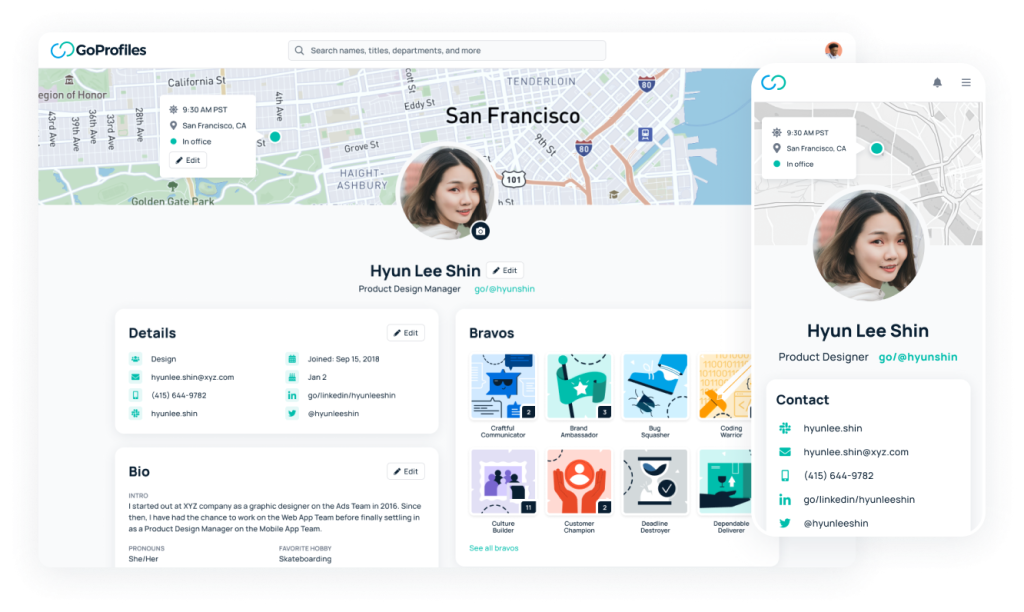In the past few years, more and more companies have made the decision to go fully remote or switch to a hybrid work environment. There are now three times more remote jobs compared to 2020.
Though this has been a challenging transition for some, many workers are embracing this opportunity. In fact, 87% of workers who have the opportunity to work remotely spend an average of three days a week working from home.
Despite the benefits of working on a remote team, it can also cause major communication and collaboration setbacks. It’s more important than ever for company leaders to do what they can to support their remote team and enable their best work.
In this article, we’ll look at what a successful remote team looks like and what changes you can make to better support your remote team.
What makes a remote team successful?
Despite preconceived notions, those who work remotely now know all too well that “remote work” isn’t synonymous with “easier work.”
The foundation of any prosperous remote team starts with the company leaders. Employees look to those in leadership positions for indicators and will follow accordingly. As a manager, you’re in a unique position to set the tone of how your team operates — from your communication practices, to how you maintain company culture in a virtual setting.
Let’s take a look at the core functions of a thriving remote team.
1. Strong communication skills and channels
It’s easy for online communication to go awry. Plus, employees spend nearly 20% of the workweek looking for the information they need or tracking down coworkers who can help with a task.
That’s why teams who make a point to communicate clearly flourish in a remote setting.
Open and effective communication is vital for remote teams for several reasons:
- The entire team is clear on expectations and responsibilities
- Problems can be resolved quicker by eliminating assumptions and providing additional context that is necessary for virtual situations
- Employees who feel more connected create a more dynamic environment for teamwork

With that being said, better communication starts with better organization. Having too many communication channels can be overwhelming, and you run the risk of important information not being relayed.
Tools that make it easier for team members to find and share resources help mitigate confusion, duplicate work, and other misunderstandings no matter where everyone is working.
With a tool like GoLinks, your remote team can easily find and share resources. GoLinks lets you take any long URL and turn it into a short, memorable link that’s easy to access and share. For example, if you hold a weekly status meeting, you can make sure notes are captured in a Google Doc that everyone can access using a go link like go/weeklystatus. This is easy to share on Slack, so the team members that might not have been able to attend the meeting are always in the loop on what’s being discussed.

2. Defined boundaries
For many, the line between work and personal life has been blurred with the sudden shift to remote work. Without the commute, seeing coworkers in person — among other things related to “going to” work — it can be difficult to shut the door on work for the day.
According to Buffer’s State of Remote Work 2019, the biggest issue people face with remote work is unplugging after working hours.

Of course, for employees with responsibilities like kids and pets, it can be tough to stick to a strict work schedule, but there are many benefits to setting boundaries with your working hours, like:
- Better work/life balance
- Less stress
- Better prioritization of tasks
- Improved job satisfaction
Successful remote teams emphasize work/life boundaries and stick to them. We’ll discuss how organizations can do this in more detail later in this article.
3. Trust and autonomy
Building trust among your remote team can reduce any uneasiness around the common worry, “Is anyone actually working?”
A study from the Harvard Business Review found that employees who are part of high-trust companies experience 74% less stress, 106% more energy at work, and a 50% higher productivity rate.
Instead of worrying about if your employees are online during “working hours,” focus on the results they produce. When goals and deadlines are properly communicated, employees will understand what is expected of them and will execute accordingly. Leaders that focus on these outcomes yield teams that can be productive in any setting.
Now that you have an idea of what a strong, successful remote team looks like, here are some helpful ways you can assess your team’s performance as well as tactics you can implement today to support your remote team.

How can I better support my remote team?
Being aware of why it’s essential to support your team is a step in the right direction, but knowing how to support them takes things to a whole new level.
Here are a few tactics you can implement today to help your remote team thrive.
1. Assess your remote team collaboration tools
By now, you’ve had some time to work with several tools as your team made the transition to remote and know which ones are working and which ones you should eliminate.
Take a look at the tools your team uses and determine if it’s helping or hindering your processes.
When assessing, ask yourself and your team:
- What tools are being leveraged more?
- What tools are not adapting well to a remote setting?
- Are there any processes or workflows that could be streamlined to fit remote work?
- What tool additions would help your team be more efficient or productive?
Pay special attention to the tools that help your team work smarter across the board.

2. Measure results, not hours logged
Focusing on the results your employees are yielding rather than the number of hours they’re online is a far better metric to gauge productivity.
Just as the company is trying to find its new normal, so are your team members. Therefore, assessing the results of your employees from an individual level and a collective level can give you the best insight into the health of your remote team.
To help mitigate burnout and give your remote team more structure, managers should be effectively communicating expectations and deadlines. In lieu of in-person meetings or quick team huddles, make sure your OKR (objective and key results) document is always up to date and provides added context if needed. Make sure it’s easily accessible, shareable, and understood by all team members.
💡Tip: Use GoLinks to easily share OKRs using go/okr

Comparing employee performance against the expectations you set can help you better understand how your team is doing and where you need to step in, if at all. Focusing on and rewarding outcomes will build trust, which fosters a productive team.
3. Leverage the power of feedback
Gathering employee feedback will help you get the full picture of how your employees are performing and how they perceive they are doing.
Because collecting, analyzing, and implementing employee feedback is a delicate thing, it’s important to cover a few bases first:
- Make employees feel secure. When asking for feedback, it’s important that employees feel safe to provide their responses. Allowing employees to provide feedback in a way that works best for them — like on a phone call, a video call, email, or an anonymous survey.
- Communicate empathy. Let your team know that it’s completely OK to include things like their families and mental health in their responses. Being empathetic to everyone’s circumstances is essential to create a safe space for feedback. Also, inform employees on how the feedback will be used, who it will be shared with, and any other details they should know.
- Create opportunities to connect. Take feedback collection a step further by inviting employees to share their remote work experience and feedback as a group. Making this space available to your team will give them the chance to emphasize with each other and draw from each other’s learnings.

Employee opinions are a valuable thing to have to help your team thrive remotely, but so is your feedback. It’s important to provide team feedback with the same level of empathy and openness as you did when you were collecting it. Be empathetic in your communication, from the medium you choose to your tone of voice.
💡Tip: Adding an emoji can better help express tone in chats! 😃
4. Make it easy for employees to find coworker information
When your team is remote, it’s harder to keep track of who does what. Your team may get frustrated when they have difficulty figuring out who exactly they need to collaborate with.
For example, let’s say you’re on the marketing team and need some information from the sales team. If you’re new to the company or your company is growing, it may be hard to track down who you need to message to get this information.
To make remote team collaboration easier, use a people platform like GoProfiles.
GoProfiles automatically syncs with your HR platform to pull information like job titles and reporting structures. So whenever an employee needs to communicate with someone they don’t normally interact with, all they have to do is search through the org chart and pull up their employee profile. From there, they can discover things like role, location, time zone, contact info, and more.

5. Emphasize context in communication
The phrase “lost in translation” should never apply to remote work. But when you’re working remotely, you can never be sure what your coworkers are doing at that moment in time. They could be tending to their children or juggling other responsibilities, all while trying to get their work done. Plus, with an increase in context switching due to the disruption of normal everyday routines — among other side effects as a result of COVID-19 — productivity has taken a hit.
Working remotely or not, people communicate in all sorts of ways, so providing context around your communication is imperative. Under these circumstances, it’s more important than ever to empathize with employees who are sharing their workspace, time, and energy with their families or roommates. Over-communicating helps set expectations, eliminates confusion, and minimizes the chance of miscommunication.
6. Encourage employees to stick to a work hours schedule
We know how easy it is to blend the lines of work and personal life while working remotely. Empowering your team to take the time to be with family and away from the computer can go a long way in terms of mental health, job satisfaction, and performance at work.
As they say, you can’t pour from an empty cup, so making sure your team takes care of themselves is crucial not only for the well-being of your employees but the health of the company.
7. Keep your company culture alive
Remote work can feel isolated and lonely. Leaders are in a unique position to not only help their team adapt to remote work but to help maintain the company culture they worked so hard to establish.
Think of ways you can preserve your company culture — whether it’s virtual happy hours every other week, a standing weekly check-in meeting, or another team-building activity that is more on par with your company culture.

8. Check in with your team and make adjustments where needed
At this point, working from home isn’t a new reality for many people. But that doesn’t make it any less challenging. As a company leader, only you know what works best for your team. This guide is meant to serve as a jumping-off point. It’s up to you to uncover what works for your organization by implementing, observing, and iterating.
GoLinks — a knowledge management tool for remote teams
Stop jumping through hoops to find the resources that you need at work. GoLinks improves productivity by helping remote teams find and share information fast with memorable short links called go/links.
This knowledge management tool can turn any long link into something that’s easy to remember, type, and share verbally or visually. No more endless file folders or jumbled URLs—just straightforward, streamlined, and successful collaboration. Learn more or get started for free at https://www.golinks.io
Access and share resources instantly with GoLinks
Try for free
Twitter • Linkedin • Instagram • Facebook • Youtube • G2 • GitHub














